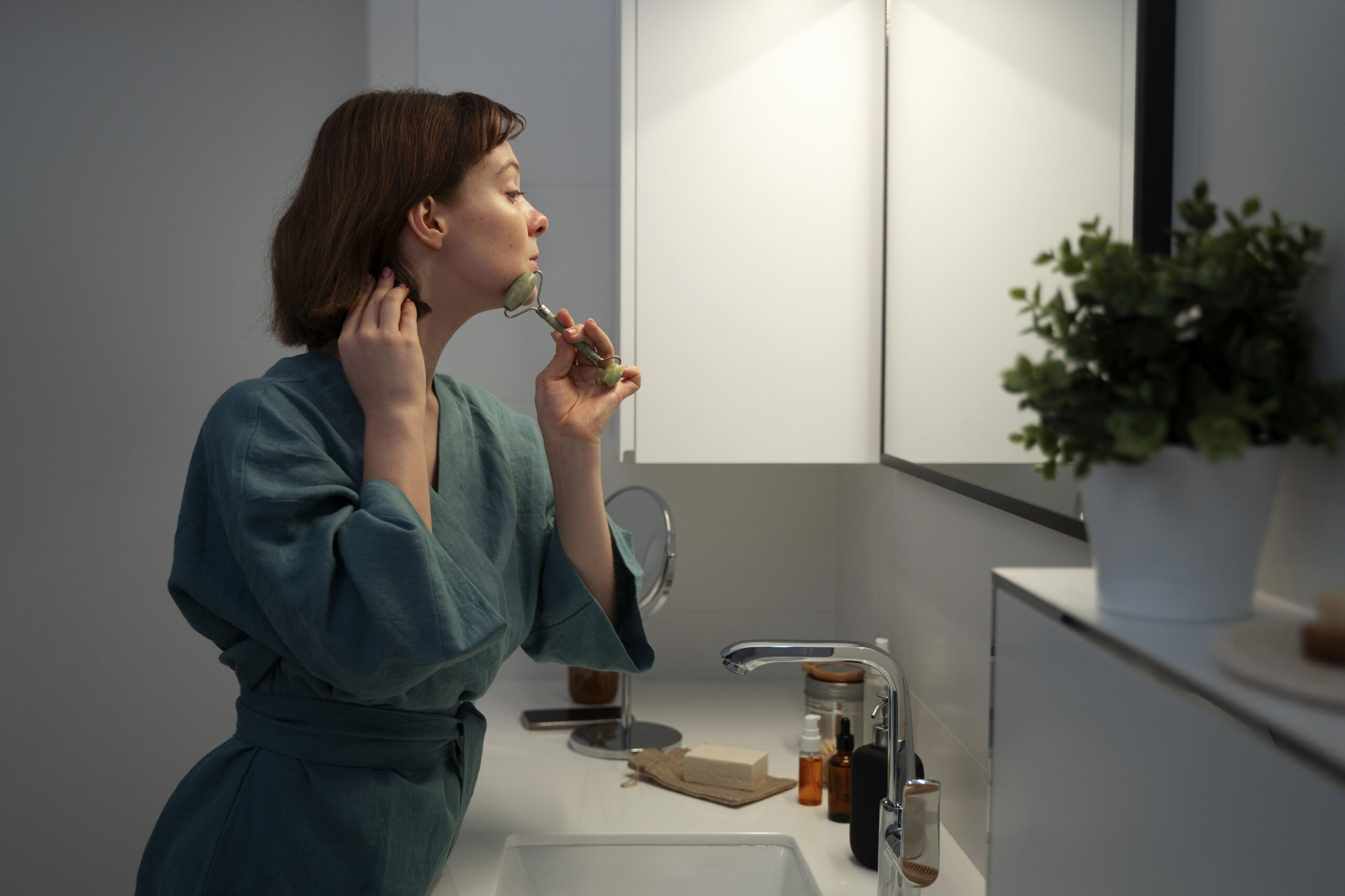As we grow older, our life stories often show on our faces. This is even more relevant if you reside in the desert. If the story your desert skin tells is one of despair, adopting a few new habits before a night out might help you feel better.
The morning routine is defense and protection. A hat, sunglasses, and SPF are required the majority of us are rather good at it. But in the desert, nighttime skin care is about recovery, and that’s just as important as remembering SPF. And yes, it is equally important for men and women.
We may be busy during the day, but at night our bodies kick into high gear and begin repair work, including our largest organ, our skin. Think of it like night crews repairing roads when traffic is light. While we sleep, our skin does its best to fight the devastating UV rays we are exposed to and other environmental factors that are magnified in desert climates.
If you skip a few simple steps at the sink and instead read another chapter or keep scrolling through TikTok, you’ll cut down on your sleep and the time your skin needs to regenerate.
Adapting your nighttime skincare routine to the desert has more to do with the choices you make in the skincare department than slathering on that old cream you found under the sink. It’s a bit of a work, but it is definitely worth it.
Clean.
Try to look for a cleanser that contains oils so as not to strip your skin of its own natural oils.
Stay hydrated.
Find a spray (not a toner) that won’t clog your pores. Your pores know how to close naturally. Choose a mist that draws moisture into your skin from the surrounding air and the deeper layers of your skin, such as hyaluronic acid, glycerin, aloe vera, and sodium PCA derived from amino acids.
Moisturizes.
There’s no rule that says you need different moisturizers for day and night, but you do need a rich moisturizer. Ingredients should include butters such as murumuru and cupuaçu, as well as oils that smooth and soften the skin. Use more at night to compensate for losses during the day.
Remember: Most moisturizers feel good and some even smell good, but unless you have an emollient that you know about, it’s not a product that will give you measurable results, it just feels good to use. More likely to have purchased. How do you know? Look at yourself in the mirror in the morning. Regardless of your age, your skin should look and feel slightly plumper than the night before.
Targeted therapy.
If you suffer from age spots or want to prevent them, night is the time to reveal the key factors. Research is constantly being carried out, but there are some materials that are considered classics and can obviate the need to embark on research missions. These include retinol or its newer sibling, retinal, for cell regeneration. Vitamin C; niacinamide; alpha hydroxyl acids; and peptides.
Humidifier.
You may want to consider having one in your bedroom to moisturize the dry desert air and maintain your skin’s hydration levels throughout the night.
If you can understand the connection between your nighttime routine and daytime glow, your skin might start to thrive in the desert like a long-lived celebrity with blooming cacti and bougainvillea. It just takes a little effort.

1 thought on “Skin time at night”